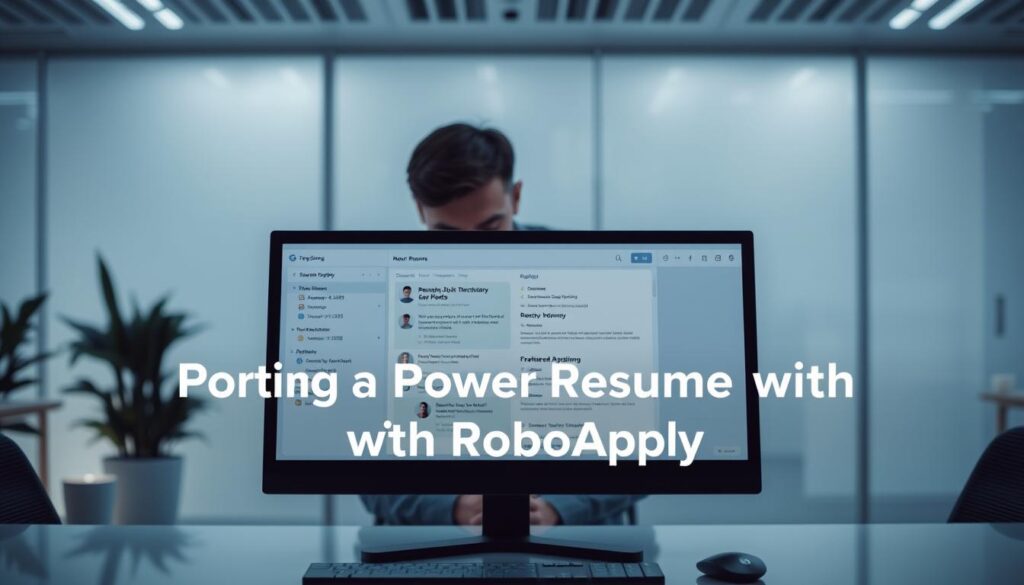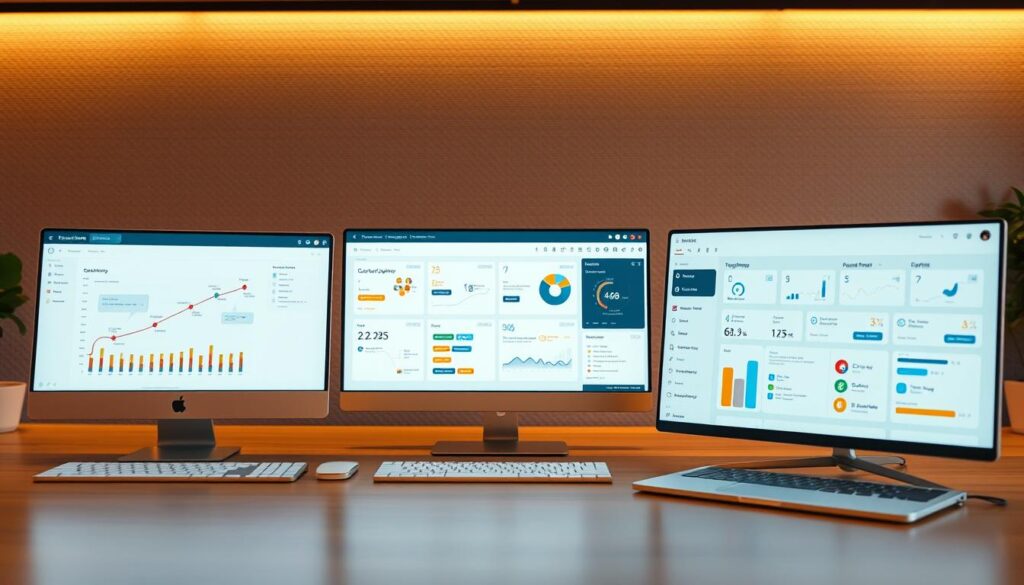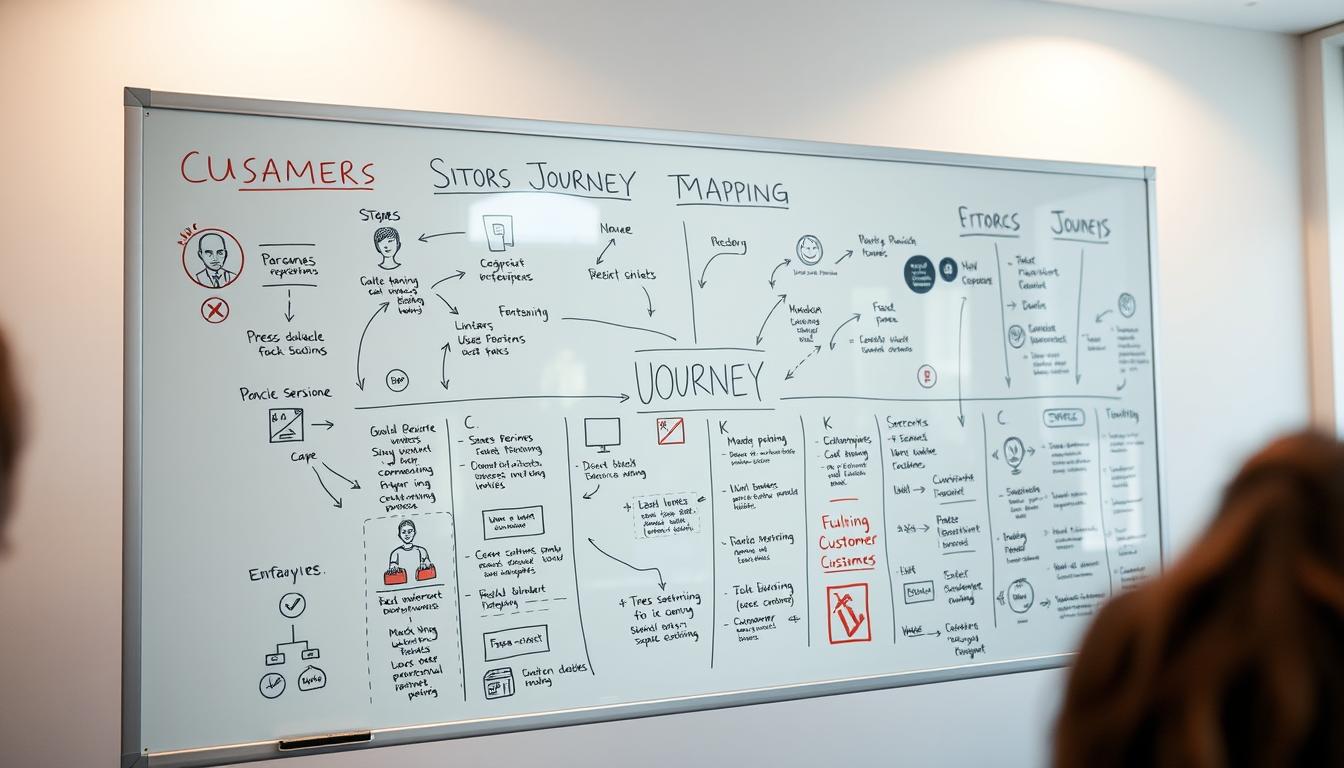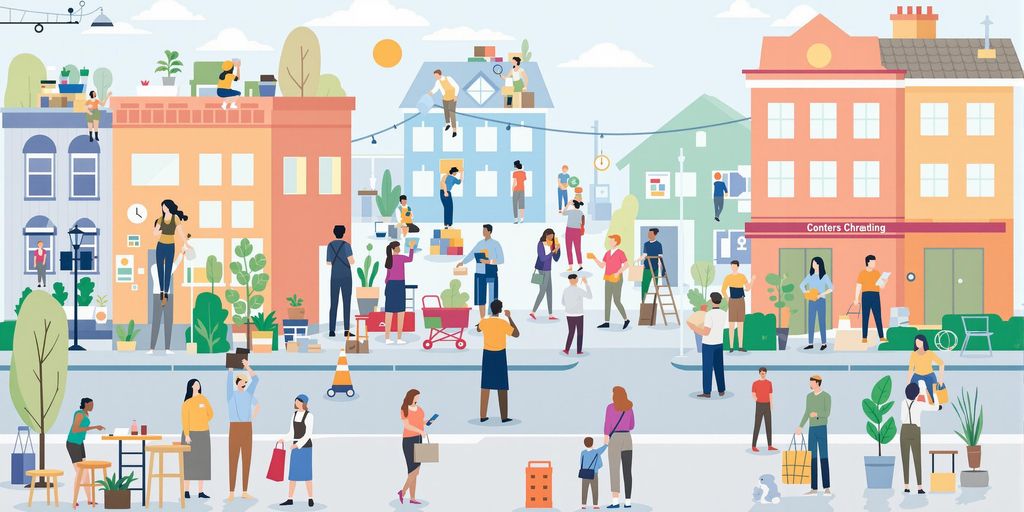Did you know 73% of customer experience teams now use journey mapping to boost satisfaction? This growing demand is reshaping careers: By 2025, employers will need 34% more specialists who can turn complex user data into actionable strategies.
Businesses rely on these professionals to identify pain points and align teams around customer goals. You’ll need analytical skills to interpret behavior patterns and collaboration techniques to unite departments. Modern tools like RoboApply’s automated job search platform help candidates stand out in this competitive field.
This guide breaks down exactly what hiring managers want. You’ll learn which certifications matter most, how to highlight cross-functional experience, and why storytelling skills make interview answers memorable. We’ll also show you time-saving strategies for tailoring applications to specific roles.
Key Takeaways
- Demand for journey experts will surge 34% by 2025
- Top employers prioritize collaboration and data visualization skills
- Certifications in CX software boost resume visibility
- RoboApply’s tools automate application tracking and interview prep
- Portfolios showcasing real projects outperform generic resumes
Understanding the Role of a Journey Mapping Specialist
Businesses now prioritize customer journey analysis to bridge gaps between company assumptions and real user experiences. Specialists in this field act as detectives, uncovering hidden patterns that shape how people interact with brands.
Key Responsibilities and Daily Tasks
Your core task involves leading workshops where teams map current processes and identify friction points. You’ll gather behavioral data through interviews and surveys, then transform raw insights into visual maps. These diagrams help stakeholders see exactly where customers struggle during critical interactions.
A typical day might include analyzing support tickets from customer service roles or collaborating with marketing teams on user personas. You’ll prioritize issues impacting both satisfaction and revenue, creating action plans that align departments.
Required Knowledge of Customer Experiences
Mastery of psychology principles helps predict user behavior at each journey stage. You need expertise in tools like touchpoint matrices and emotion mapping grids. Fluency in data visualization software turns complex findings into digestible formats for non-technical audiences.
Successful specialists understand how cultural trends influence expectations. They balance quantitative metrics with qualitative stories, ensuring recommendations reflect both numbers and human needs. This dual focus drives meaningful improvements across the entire business ecosystem.
Crafting a Powerful Resume with RoboApply
Your resume acts as the first map hiring managers use to navigate your professional story. RoboApply’s platform transforms this critical document into a tailored showcase of your journey mapping expertise. Let’s break down the exact strategies to make employers stop scrolling.

Leveraging the AI Resume & Cover Letter Builder
Start with RoboApply’s AI builder to highlight workshop facilitation and cross-department collaboration. The tool suggests industry-specific phrases like “Designed 12+ customer journey maps improving satisfaction scores by 28%.” It auto-formats complex data visualizations into clean, recruiter-friendly layouts.
For cover letters, the AI crafts narratives connecting your research skills to business outcomes. Example: “Led 50+ user interviews identifying 3 critical pain points in checkout processes.” This precision demonstrates your ability to turn raw information into actionable steps.
Optimizing with ATS Tools and Grammar Checker
RoboApply’s ATS scanner ensures keywords like “touchpoint analysis” and “stakeholder alignment” appear naturally. The tool flags formatting issues that cause 73% of resumes to get rejected by tracking systems. Pair this with the grammar checker to maintain flawless professionalism – crucial when showcasing attention to detail.
Transferable skills shine through smart structuring. If you’re transitioning from customer service roles, the platform reframes problem-solving experience into journey mapping terminology. Quantify collaborative wins: “Coordinated 8 departments to streamline onboarding processes, reducing drop-offs by 19%.”
Developing Essential Skills for Journey Mapping Success
Mastering journey mapping requires blending empathy with technical precision. You’ll transform raw information into strategies that reveal hidden opportunities for customer connection.
Understanding Customer Journey Maps and Pain Points
Start by sharpening your ability to spot pain points through behavioral patterns. Conduct interviews using open-ended questions like “Walk me through your last purchase experience.” This approach uncovers real stories, not just opinions.
Analyze feedback from surveys and support tickets to identify recurring frustrations. Look for gaps between what users say and what data shows. Effective maps balance emotional triggers with practical roadblocks.
Building Data-Driven Insights
Combine quantitative metrics with qualitative observations to create actionable journey maps. Use tools like heatmaps to visualize where customers hesitate or abandon processes. Cross-reference this with sales resumes performance data to prioritize high-impact improvements.
Workshops become powerful when you guide teams through assumption testing. Teach stakeholders to separate organizational biases from verifiable user needs. This collaborative approach ensures maps reflect genuine experiences rather than internal guesses.
Mastering Interview Strategies for Journey Mapping Roles
Interviews for journey mapping roles test your ability to turn insights into action. Employers want proof you can lead teams through complex projects while keeping customer needs central. Your preparation must balance storytelling with technical depth.

Preparing for Behavioral and Technical Questions
Behavioral questions often explore workshop facilitation. Describe a time you aligned conflicting departments on a customer journey map. Example: “I guided marketing and IT teams to redesign a checkout flow, reducing cart abandonment by 22%.” Quantify outcomes to show measurable impact.
Technical questions focus on research methods. Explain how you segment user personas or validate assumptions with data. Practice articulating your process for turning interview transcripts into visual maps. Use tools like empathy diagrams to structure answers clearly.
Utilizing RoboApply's Interview Coach for Confidence
RoboApply’s platform simulates real interview scenarios. The AI analyzes your responses to common manager interview questions, suggesting improvements in clarity and detail. You’ll refine how you discuss cross-functional collaboration without jargon.
Role-play explaining complex maps to executives. The tool flags filler words and vague phrases, helping you communicate with precision. Record mock interviews to observe body language and pacing – critical when presenting multi-stage processes.
How to Land a Journey Mapping Specialist Job in 2025
Effective application strategies can set you apart in the competitive journey mapping job market. Timing matters: Apply during Q1 hiring surges when companies budget for customer experience roles. Target healthcare, finance, and tech firms where your skills directly impact revenue and retention.
Actionable Tips for Application Success
Prove collaboration skills by detailing work with 6-8 member teams. Mention specific tools like Miro or Lucidchart for workshop facilitation. Hiring managers want evidence you can translate group input into clear visual maps.
Build experience through pro-bono projects. One specialist redesigned a nonprofit’s donation process, boosting conversions by 17%. These real-world examples demonstrate problem-solving abilities better than generic resumes.
Network at CX conferences and LinkedIn groups focused on journey mapping. Share case studies showing how you identified hidden pain points. Referrals often come from peers who’ve seen your work firsthand.
Align applications with business goals. Quantify past achievements: “Reduced onboarding drop-offs by 22% through journey redesign.” This shows you connect customer insights to measurable outcomes employers value.
Utilizing RoboApply Tools for Job Application Efficiency
Streamlining your search requires tools that handle repetitive tasks while preserving personalization. RoboApply’s suite transforms application management from chaotic to strategic, letting you focus on what matters – demonstrating your expertise.

Exploring the Auto-Apply Chrome Extension
This tool lets you apply to 10+ roles in minutes while maintaining tailored quality. It auto-fills forms using your master profile but adapts responses using journey mapping terminology from each job description. One user reported landing 3 interviews weekly after optimizing their automated outreach.
Set filters for company size or industry to avoid mismatches. The extension highlights keywords from postings, ensuring your applications speak directly to each team’s priorities. It’s like having a co-pilot for high-volume searching.
Managing Your Job Tracker and Outreach CRM
Organize applications visually using RoboApply’s pipeline view. Color-code stages from “applied” to “offer received,” with reminders for follow-ups. Track response rates to identify which types of companies engage most with your skillset.
The CRM stores notes from networking calls and interviews. After a recent update, you can now sync it with LinkedIn to auto-log interactions with hiring managers. One candidate secured referrals at 4 firms by using this feature to maintain consistent communication.
Analyze feedback trends in the tracker to refine your approach. If multiple teams mention needing clearer resume examples of cross-department projects, update your portfolio accordingly. This cycle turns rejections into actionable improvements.
Tapping into Research and Data for Continuous Improvement
Successful journey mapping hinges on evolving strategies through real customer insights. You’ll need systematic approaches to collect and refine data that reveals shifting user priorities.
Gathering Customer Feedback Effectively
Start by embedding feedback loops at key journey stages. Deploy short surveys post-purchase or service interactions. Tools like in-app pop-ups capture immediate reactions while experiences stay fresh.
Combine direct methods (user interviews) with passive tracking (behavior analytics). For personas, observe how different groups navigate pain points. One retail specialist discovered 40% of older users abandoned carts due to font size issues – a fix that boosted conversions.
Analyze feedback using emotion-coding frameworks. Tag comments by frustration level and desired outcomes. Cross-reference this with data science techniques to spot trends across demographics. Prioritize issues impacting both satisfaction and revenue.
Update maps quarterly using fresh research. Share findings through visual dashboards that highlight before/after metrics. This cycle turns raw information into business improvements teams can rally behind.
FAQ
What tools do I need to create customer journey maps effectively?
Use platforms like Miro or Lucidchart for visualizing stages and pain points. Combine qualitative data from Hotjar surveys with quantitative metrics from Google Analytics. RoboApply’s AI tools can help format findings into shareable reports for stakeholders.
How do I demonstrate journey mapping expertise during interviews?
Share specific examples of how you identified friction points in user experiences. Discuss how you collaborated with cross-functional teams to implement solutions. Use RoboApply’s Interview Coach to practice articulating measurable outcomes from past projects.
What’s the best way to identify customer pain points in complex journeys?
Conduct user interviews with targeted personas and analyze feedback loops across touchpoints. Map emotional highs/lows at each stage using tools like UXPressia. Validate hypotheses with A/B testing data to prioritize high-impact improvements.
How can RoboApply’s Chrome Extension streamline job applications?
The Auto-Apply feature populates application fields instantly while maintaining consistent formatting. It tracks submission dates and employer responses through the Job Tracker dashboard, saving 8-10 hours weekly on manual tasks.
What metrics prove success in journey mapping projects?
Track reduced customer effort scores (CES), improved net promoter scores (NPS), and shorter resolution times. Show stakeholders how specific map-driven changes increased conversion rates by X% or lowered churn by Y% within defined periods.
How do I balance creativity with data rigor in journey mapping?
Start with empathy-driven persona workshops, then validate assumptions through session recordings and heatmaps. Use RoboApply’s Grammar Checker to ensure research summaries maintain narrative flow without compromising analytical depth.
What technical skills are non-negotiable for 2025 journey mapping roles?
Employers require proficiency in CRM systems like Salesforce, analytics tools like Tableau, and prototyping software like Figma. Familiarity with AI-driven sentiment analysis tools and omnichannel tracking platforms is now essential.


















